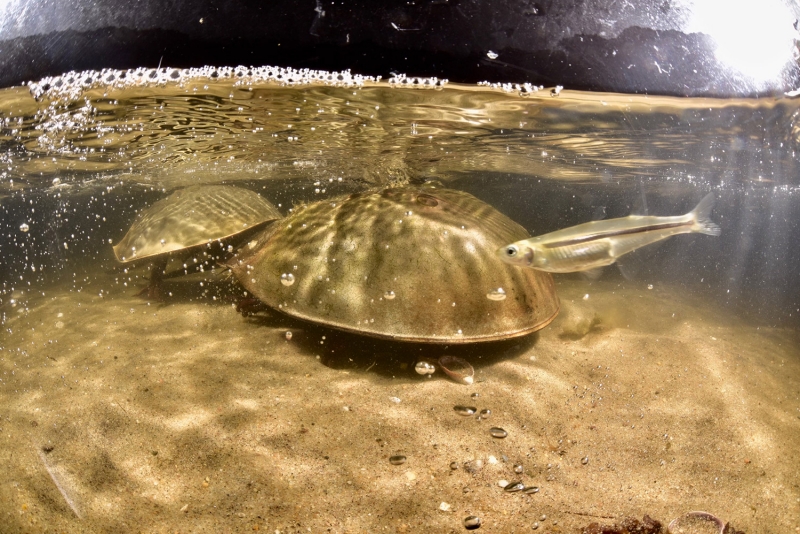
Introduction
Horseshoe crab blood, with its Limulus Amebocyte Lysate (LAL), remains a cornerstone of endotoxin testing in the pharmaceutical and medical device industries. Recent advancements in horseshoe crab aquaculture offer promising solutions for sustainable LAL production. This blog post examines a groundbreaking study on horseshoe crab aquaculture and its implications for the future of endotoxin testing.
Breakthrough Research on Horseshoe Crab Aquaculture
A recent study published in Frontiers in Marine Science presents a comprehensive evaluation of horseshoe crab aquaculture as a sustainable method for producing high-quality LAL. The research, conducted by Kepley Biosystems Incorporated and several academic institutions, highlights the potential of controlled aquaculture environments to maintain horseshoe crab health while providing a reliable supply of LAL (Frontiers).
Key Findings and Methodologies
- Controlled Aquaculture Habitats: The study designed a controlled aquaculture habitat to rear horseshoe crabs in captivity. This environment was meticulously monitored to ensure optimal conditions for the crabs’ health and well-being. Key health markers such as amebocyte density, hemocyanin levels, and LAL activity were tracked to assess the impact of captivity on the crabs.
- Sustainable Hemolymph Harvesting: The researchers developed a low-impact hemolymph harvesting method using an indwelling catheter. This technique allowed for repeated blood extractions with minimal stress to the crabs, ensuring their survival and rapid recovery. The study reported a 100% survival rate for horseshoe crabs in captivity, a significant improvement over traditional harvesting methods (Frontiers).
- High-Quality LAL Production: The LAL produced from aquaculture-derived hemolymph was of high quality, comparable to that obtained from wild-caught horseshoe crabs. This finding is crucial for maintaining the efficacy and reliability of endotoxin testing in the biomedical industry.
Implications for the Biomedical Industry
The successful implementation of horseshoe crab aquaculture could revolutionize the supply chain for LAL, reducing the industry’s reliance on wild populations. This method addresses the growing ethical and environmental concerns associated with traditional harvesting practices. By ensuring a sustainable and ethically sourced supply of LAL, the biomedical industry can continue to meet regulatory standards and ensure the safety of medical products without compromising the future of horseshoe crab populations.
Balancing Innovation with Proven Methods
While synthetic alternatives to LAL, such as recombinant Factor C (rFC), are being developed and show great promise, LAL derived from horseshoe crabs remains the gold standard due to its long-standing reliability and regulatory acceptance. Transitioning entirely to synthetic alternatives will require extensive validation and regulatory approval, which may take years. In the meantime, sustainable aquaculture offers a practical solution to balance the demand for LAL with conservation efforts (SpringerLink) (LabPulse.com).
Our Commitment at LAL Reagents
At LAL Reagents, we are dedicated to incorporating the latest research and advancements in our practices to ensure the sustainability and ethical sourcing of LAL. We have implemented controlled aquaculture habitats for horseshoe crabs, optimizing their health and survival while providing high-quality LAL for endotoxin testing. Our low-impact hemolymph harvesting methods ensure minimal stress and rapid recovery for the crabs, aligning with the best practices highlighted in recent studies.
Our goals as a company include:
- Sustainability: Continuously improving our aquaculture techniques to maintain a sustainable supply of LAL without depleting wild horseshoe crab populations.
- Innovation: Investing in research and development to explore and validate synthetic alternatives like rFC, ensuring we stay at the forefront of technological advancements in endotoxin testing.
- Ethical Practices: Adhering to the highest standards of animal welfare and regulatory compliance, ensuring our practices benefit both the biomedical industry and the environment.
By integrating these practices, LAL Reagents is committed to supporting the biomedical industry’s needs while safeguarding the future of horseshoe crabs.
Conclusion
Horseshoe crab aquaculture represents a significant advancement in sustainable endotoxin testing. By adopting these innovative practices, the biomedical industry can ensure a steady supply of high-quality LAL while promoting the conservation of this ancient species. As we look to the future, the integration of aquaculture-derived LAL and the development of synthetic alternatives will play a crucial role in maintaining the highest standards of safety and sustainability in medical science.
For further reading and detailed studies on this topic, explore the latest research from reputable sources such as Frontiers in Marine Science and the U.S. Pharmacopoeia.

